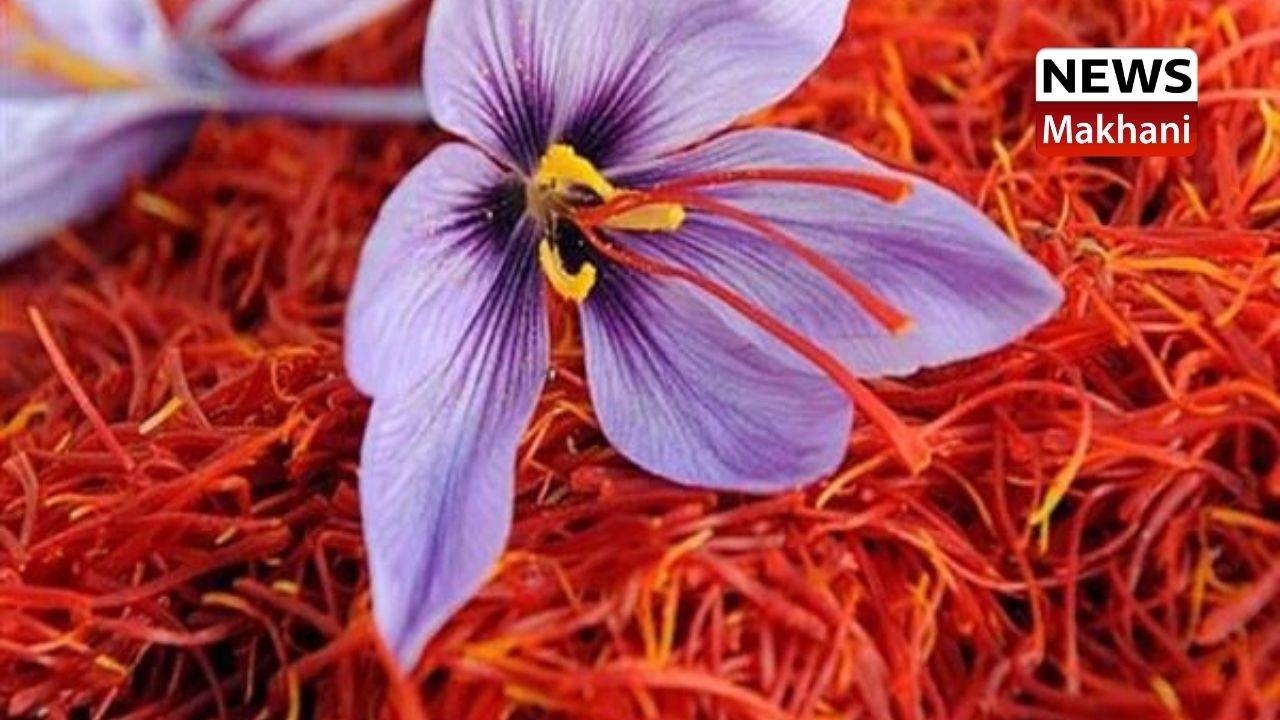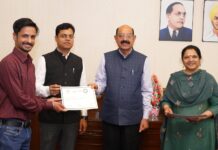Transforming J&K
IIKSTC instrumental towards facilitating Saffron growers with enhanced opportunities, income
Scientific methodologies prove game changer in Saffron cultivation in J&K
JAMMU, MARCH 27 2022
The India International Kashmir Saffron Trading Centre (IIKSTC), Dusso, Pampore has proved instrumental in facilitating saffron growers with organized marketing, quality based pricing besides direct transaction between growers, traders, exporters and industrial agencies ensuring substantial profits to the beneficiaries.
READ MORE :-Chief Justice administers oath of office to newly appointed Addl. Judges of High Court
In IIKSTC, scientific post-harvest handling practices like Drying, Grading, Stamen Separation etc are being adopted for fetching better returns to farmers.
“Saffron produced at farmer fields in the Union Territory of Jammu and Kashmir is of best quality which proffers strong flavour, aroma and colour effect as well in comparison to Saffron produced across the world”.
The governments, in an effort to maintain the identity of Kashmir Saffron and eliminate the role of intermediaries from the marketing channel for better pricing for growers in the domestic and international market which will eventually help growers realize maximum prices, established IIKSTC.
IIKSTC is tremendously helping the saffron growers to enforce adoption of quality standards and fix the price based on quality grades at farm gate level.
The government worked hard to motivating orthodox mindset of farmers towards adopting scientific methodology for promoting saffron cultivation as bold initiatives like prophylactic measures and soil health reclamation measure are being taken which are proving a game changer in Saffron cultivation in J&K.
More than 30000 families in J&K located in 226 villages are associated with saffron cultivation. Jammu & Kashmir is the second largest Saffron producing area in the world and is only place in the country where saffron is being cultivated.
Collection center unit set up as part of IIKSTC with a cost of Rs 37 crore is meant for collection of produce from farmers, proper weighing, issuing code numbers, tagging and maintenance of record.
Proper marking of crates is ensured so that there is no mixing of produce and ownership disputes are avoided, a saffron farmer, Ali Muhammad Mir of Dusoo Pampore said. “Then our produce is sent to stigma separation unit and in case of excess produce, it is kept in cold storage after proper coding. We are facilitated at every step by the departmental officials to locate our produce, he added”.
In the quality evaluation laboratory unit, officials receive coded samples from drying unit for quality evaluation and testing for conducting physical and chemical tests of saffron samples received, using IS methods.
The laboratory is equipped with all the facilities and machines to provide accurate and globally acceptable test results.
“The technicians allot grades as per ISO standards for each parameter besides maintaining liaison with e-auction unit by providing test certification so that the farmer can sell his produce as per the grade certified,” an official of IIKSTC said.
During the selling process, the auction center of the IIKSTC facilitates the growers to revise the “Base Price” and “Valuation Price” based on the demand and supply and other parameters till 24 hours before the auction day. The growers are able to control the “Reserve Price” in real time during auction. It gives him ability to monitor multiple lots simultaneously via features like single button knockdown. A grower can identify the market trend (demand and pricing) of various brands,” an official at the center said adding that, “Faster settlement process via electronic movement of contract note and delivery orders is ensured to sellers at the center.”
The IIKSTC is a win win situation for both seller and the buyer. Earlier, the growers are not aware of buyer details across India and world and hence they had a very small market. They were not sure that they are receiving the right market price for their Saffron produce. It used to take longer time for the growers to receive money. Similarly, buyers don’t have to wait for longer time to receive Saffron and need not to travel hundreds of kilometers to visit Saffron Growers in Kashmir to ensure that they receive the genuine price and authentic product.
Saffron production in Jammu and Kashmir had been under threat of extinction as is evident from its dwindling share in global production. Area under Saffron Production declined from about 5707 hectare to 3785 hectare in 2010-11. Simultaneously, productivity had declined from an average of 3.13 Kg/ha to 1.88 kg/ha over the years before 2010.
To give boost to saffron production and mitigate sufferings of saffron growers, Union Ministry of Agriculture and Cooperation, during the year 2010-11, introduced a scheme “National Mission on Saffron” and setting up IIKSTC is one the components of the Mission.
During the launch of “Jashn-e-Zafraan”, Lieutenant Governor said that the increase in saffron production from 2.5 Kg per hectare to 5 kg per hectare will motivate farmers of other agriculture and allied sectors to increase their production taking maximum benefit of various agriculture development schemes of the Central and Union Territory government.
LG said that after the tireless efforts of the central government last year, Saffron got the Geographical Indication Tag and paved way for it to become a powerful brand in the international market.
To acquaint the saffron growers/sellers with the mechanism/ protocol to be adopted for post-harvest management of saffron and its e- auctioning under Kashmir saffron brand, the department of Agriculture Kashmir organizes awareness training program at IIKSTC.
Union Minister of Agriculture and Farmers Welfare, Narendra Singh Tomar, during his visit to Spice park said, the central government is ready to provide all possible help and support to the farmers. “With the existence of Spice Park, the income out of saffron production of growers has doubled, he said. The Center will provide all kinds of facilities and assistance to the farmers that will make the lives of our farmers prosperous,” he said.

 हिंदी
हिंदी






